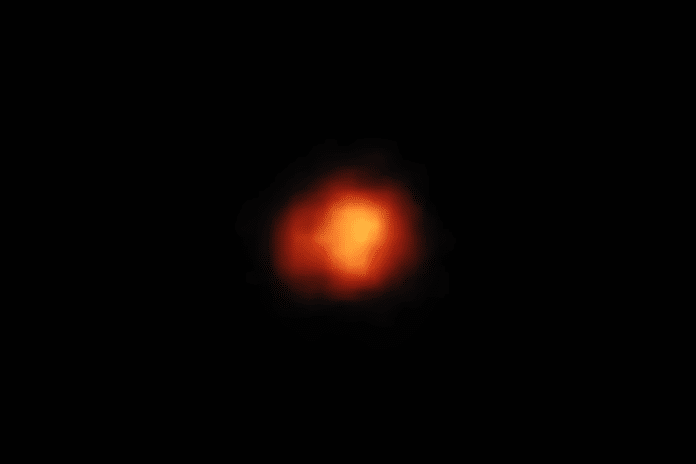Observations with JWST have uncovered a surprisingly high abundance of candidates for early star-forming galaxies, with distances (redshifts, z) estimated from multi-band photometry. Redshift is the amount that its color has been shifted due to its motion away from us.
Based on photometry, which measures light brightness in images using a limited number of wide frequency filters, the original redshift estimations (and hence the timeframes after the Big Bang) were established. These calculations were based on information gathered by CEERS during the first observing season of the telescope.
To get a more accurate estimate, the CEERS team applied for follow-up measurements with JWST‘s spectroscopic instrument, NIRSpec. Thanks to the observations, astronomers have now confirmed that a galaxy first detected last summer is, in fact, among the earliest ever found.
Last year, JWST released two new images, showing what may be among the earliest galaxies ever observed. Both images include objects from more than 13 billion years ago.
Since Maisie’s galaxy was first discovered, further observations have shown that it was discovered 390 million years after the Big Bang. Although that’s less early than the team led by University of Texas at Austin astronomer Steven Finkelstein first estimated last summer, it is nonetheless one of the four earliest confirmed galaxies observed.
Finkelstein, a professor of astronomy at UT Austin and an author of the Nature paper, said, “The exciting thing about Maisie’s galaxy is that it was one of the first distant galaxies identified by JWST, and of that set, it’s the first to be spectroscopically confirmed.”
This latest spectroscopic analysis shows that Maisie’s galaxy is at a redshift of z=11.4.
The CEERS-93316 galaxy was also examined in this study. It was first discovered in publicly available CEERS data by a team led by the University of Edinburgh, and it was previously thought to have been spotted an astounding 250 million years after the Big Bang. After further examination, the group discovered that CEERS-93316 has a more modest redshift of z=4.9, which equates to an approximate time after the Big Bang of 1 billion years.
The galaxy appears significantly bluer than it was because heated gas in CEERS-93316 was generating so much light in a few narrow frequency bands associated with oxygen and hydrogen. That blue color closely resembled the distinctive feature Finkelstein, and other researchers anticipated to find in very early galaxies. The photometric approach has a quirk that causes this to only occur for objects with redshifts of approximately 4.9. This incident, according to Finkelstein, was unlucky.
This galaxy is not just unusually blue, but it is also far brighter than what is predicted by our existing models for galaxies that originated so early in the Universe.
Finkelstein said, “This was a kind of weird case. Of the many tens of high redshift candidates observed spectroscopically, this is the only instance of the true redshift being much less than our initial guess.”
“It would have been challenging to explain how the universe could create such a massive galaxy so soon. So, I think this was probably always the most likely outcome because it was so extreme, so bright, at such an apparent high redshift.”
Journal Reference:
- Haro, P.A., Dickinson, M., Finkelstein, S.L. et al. Confirmation and refutation of very luminous galaxies in the early universe. Nature (2023). DOI: 10.1038/s41586-023-06521-7
